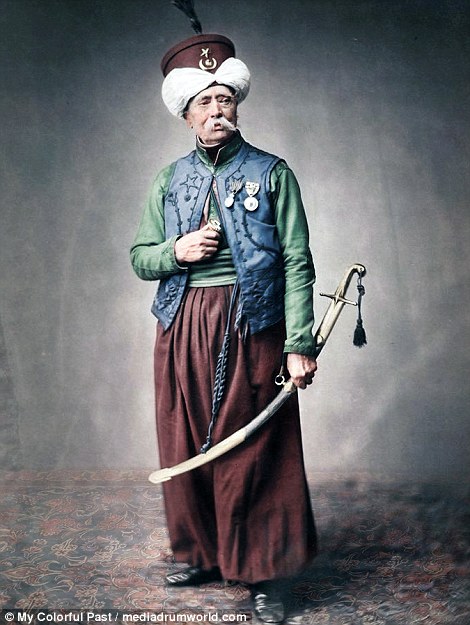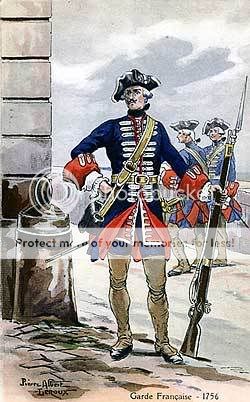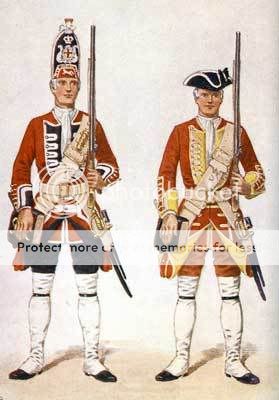Vergennes
ELITE MEMBER

- Joined
- Feb 25, 2014
- Messages
- 8,576
- Reaction score
- 61
- Country
- Location
@Nilgiri @The Sandman @AUSTERLITZ @waz @Kaptaan @Louiq XIV @vostok @Penguin @Khafee @Abingdonboy
Showing their true colours: Veteran Napoleonic officers posing in their elaborate uniforms in extraordinary remastered pictures from the 1850s
The last surviving photographs of the veterans who formed part of Napoleon Bonaparteís famous Grande Armée and fought in the Napoleonic wars have been revealed in full remastered colour.
The expertly colourised historic images inject exciting new life into the 159-year-old monochrome originals, transforming them from a dreary black and white into a vibrant work of art which shows off every intricate detail of the men's uniforms, from their medals, swords right down to their shoes.
The stunning pictures show former members of cavalry from the 7th Hussars Regiment and Quartermasters who would have distributed supplies in full uniform and Monsieur Loria, a Chevalier of Napoleon's Legion of honour, one of the highest French order for military merits.
They were digitally enhanced by My Colorful Past, a professional colouriser from Westport, Ireland.

Monsieur Maire, 7th Hussars Regiment, served from 1809 to 1815 and was one of the last surviving veterans of Napoleon's army. He is shown here in full dress uniform, wearing a white crossbelt and the Saint Helene medal. It was issued on August 12, 1857, and was given to all veterans of the wars of the French Revolution and the Napoleonic Empire. The uniform of the Napoleonic hussars included the pelisse, seen here, a short fur edged jacket which was often worn slung over one shoulder in the style of a cape, and was fastened with a cord. His bearskin headwear with its tall shako, pompon and plume, indicate he is a Hussar Elite

Monsieur Dupont, who was a fourier for the 1st Hussars Regiment, stands in full uniform with a Mameluke sword and a Saint Helene medal. His garment are extensively adorned with braiding (often gold or silver for officers) and several rows of multiple buttons. Under it was worn the dolman or tunic which was also decorated in braid. On active service the hussar normally wore reinforced breeches which had leather on the inside of the leg to prevent them from wearing due to the extensive riding in the saddle. On the outside of such breeches, running up the outside was a row of buttons, and sometimes a stripe in a different colour to distinguish from other regiments. His peaked shako, or hat, show he was an Officer Infantry

Monsieur Moret of the 2nd Hussars Regiment only served a short stint from 1814 to 1815. The colours of dolman, pelisse and breeches, displayed by Monsieur Moret varied greatly by regiment, even within the same army. The French Hussar of the Napoleonic period was armed with a brass hilted sabre, pictured, and sometimes with a brace of pistols although these were often unavailable. Moret is also equipped with a crested shield, pictured leaning against his chair. His bearskin headwear with its tall shako, pompon and plume, indicate he is a Hussar Elite

Quartermaster Fabry served with the 1st Hussars Regiment and the elite French cavalry unit. The 1st Hussars won battle honours at the battles of Jemmapes 1792, Castiglione 1796, Eylau 1807 and Oporto 1809. At the end of the war, in 1815, they were engaged in battle at Namur. Fabry, a Hussar elite, is shown here wearing the Saint Helene medal, issued August 12, 1857, to all veterans of the wars of the French Revolution and the Napoleonic Empire.

Monsieur Dreuse, right, of the 2nd Light Horse Lancers of the Guard, fought between 1813 and 1814. He is pictured with his headwear - which indicates he was a Voltigeur - by his side, an overcoat a white crossbelt and learning on his sword

Sergeant Taria, of the Grenadiere de la Garde, who served between 1809 and 1815 poses in the uniform of a Grenadier of The Imperial Guard, a small group of elite soldiers of the French Army under the direct command of Napoleon. His red lapels and the extravagant headwear help show his rank, as he poses with a white, blue and red overcoat and a sword hanging down to his feet

Regiment Chevalier of the Legion of Honour Monsieur Loria of the 24th Mounted Chasseur. It was the Chasseurs that usually provided personal escort to Napoleon, and he often wore the uniform of the regiment in recognition of this service. The regiment was not only known for its lavish uniform, but its combat history as well. Here Monsieur Loria dons maroon trousers and a navy blue button-up jacket as he holds his peaked hat by his side, signifying his rank

Monsieur Ducel, left, of the Mameluke de la Garde, fought between 1813 to 1815. During their service in Napoleon's army, the Mamluk squadron before 1804 wore the green cahouk (hat), white turban, and red saroual (trousers) - all with a loose shirt and a vest. Boots were of yellow, red, or tan soft leather. Weapons consisted of an Oriental scimitar, a brace of pistols in a holder decorated with a brass crescent and star, and a dagger. After 1804, the cahouk became red with a brass crescent and star, and the shirt was closed and had a collar. The main change was the addition of a regulation chasseur-style saddle cloth and roll, imperial green in color, piped red, with a red and white fringe. The saddle and harness remained Arabic in style. The undress uniform was as for the Chasseurs-à-Cheval of the Guard, but of a dark blue cloth
Showing their true colours: Veteran Napoleonic officers posing in their elaborate uniforms in extraordinary remastered pictures from the 1850s
- The 159-year-old originals were taken after the troops retired and have been reworked to add the colour
- They are the last surviving photographs of veterans who fought in Napoleon's famous Grande Armée
- The added colour shows off every intricate detail of the uniforms from their extravagant headwear to swords
- Posing for photos include former members of the cavalry from the 7th Hussard Regiment and Quartermasters
The last surviving photographs of the veterans who formed part of Napoleon Bonaparteís famous Grande Armée and fought in the Napoleonic wars have been revealed in full remastered colour.
The expertly colourised historic images inject exciting new life into the 159-year-old monochrome originals, transforming them from a dreary black and white into a vibrant work of art which shows off every intricate detail of the men's uniforms, from their medals, swords right down to their shoes.
The stunning pictures show former members of cavalry from the 7th Hussars Regiment and Quartermasters who would have distributed supplies in full uniform and Monsieur Loria, a Chevalier of Napoleon's Legion of honour, one of the highest French order for military merits.
They were digitally enhanced by My Colorful Past, a professional colouriser from Westport, Ireland.

Monsieur Maire, 7th Hussars Regiment, served from 1809 to 1815 and was one of the last surviving veterans of Napoleon's army. He is shown here in full dress uniform, wearing a white crossbelt and the Saint Helene medal. It was issued on August 12, 1857, and was given to all veterans of the wars of the French Revolution and the Napoleonic Empire. The uniform of the Napoleonic hussars included the pelisse, seen here, a short fur edged jacket which was often worn slung over one shoulder in the style of a cape, and was fastened with a cord. His bearskin headwear with its tall shako, pompon and plume, indicate he is a Hussar Elite

Monsieur Dupont, who was a fourier for the 1st Hussars Regiment, stands in full uniform with a Mameluke sword and a Saint Helene medal. His garment are extensively adorned with braiding (often gold or silver for officers) and several rows of multiple buttons. Under it was worn the dolman or tunic which was also decorated in braid. On active service the hussar normally wore reinforced breeches which had leather on the inside of the leg to prevent them from wearing due to the extensive riding in the saddle. On the outside of such breeches, running up the outside was a row of buttons, and sometimes a stripe in a different colour to distinguish from other regiments. His peaked shako, or hat, show he was an Officer Infantry

Monsieur Moret of the 2nd Hussars Regiment only served a short stint from 1814 to 1815. The colours of dolman, pelisse and breeches, displayed by Monsieur Moret varied greatly by regiment, even within the same army. The French Hussar of the Napoleonic period was armed with a brass hilted sabre, pictured, and sometimes with a brace of pistols although these were often unavailable. Moret is also equipped with a crested shield, pictured leaning against his chair. His bearskin headwear with its tall shako, pompon and plume, indicate he is a Hussar Elite

Quartermaster Fabry served with the 1st Hussars Regiment and the elite French cavalry unit. The 1st Hussars won battle honours at the battles of Jemmapes 1792, Castiglione 1796, Eylau 1807 and Oporto 1809. At the end of the war, in 1815, they were engaged in battle at Namur. Fabry, a Hussar elite, is shown here wearing the Saint Helene medal, issued August 12, 1857, to all veterans of the wars of the French Revolution and the Napoleonic Empire.

Monsieur Dreuse, right, of the 2nd Light Horse Lancers of the Guard, fought between 1813 and 1814. He is pictured with his headwear - which indicates he was a Voltigeur - by his side, an overcoat a white crossbelt and learning on his sword

Sergeant Taria, of the Grenadiere de la Garde, who served between 1809 and 1815 poses in the uniform of a Grenadier of The Imperial Guard, a small group of elite soldiers of the French Army under the direct command of Napoleon. His red lapels and the extravagant headwear help show his rank, as he poses with a white, blue and red overcoat and a sword hanging down to his feet

Regiment Chevalier of the Legion of Honour Monsieur Loria of the 24th Mounted Chasseur. It was the Chasseurs that usually provided personal escort to Napoleon, and he often wore the uniform of the regiment in recognition of this service. The regiment was not only known for its lavish uniform, but its combat history as well. Here Monsieur Loria dons maroon trousers and a navy blue button-up jacket as he holds his peaked hat by his side, signifying his rank

Monsieur Ducel, left, of the Mameluke de la Garde, fought between 1813 to 1815. During their service in Napoleon's army, the Mamluk squadron before 1804 wore the green cahouk (hat), white turban, and red saroual (trousers) - all with a loose shirt and a vest. Boots were of yellow, red, or tan soft leather. Weapons consisted of an Oriental scimitar, a brace of pistols in a holder decorated with a brass crescent and star, and a dagger. After 1804, the cahouk became red with a brass crescent and star, and the shirt was closed and had a collar. The main change was the addition of a regulation chasseur-style saddle cloth and roll, imperial green in color, piped red, with a red and white fringe. The saddle and harness remained Arabic in style. The undress uniform was as for the Chasseurs-à-Cheval of the Guard, but of a dark blue cloth








